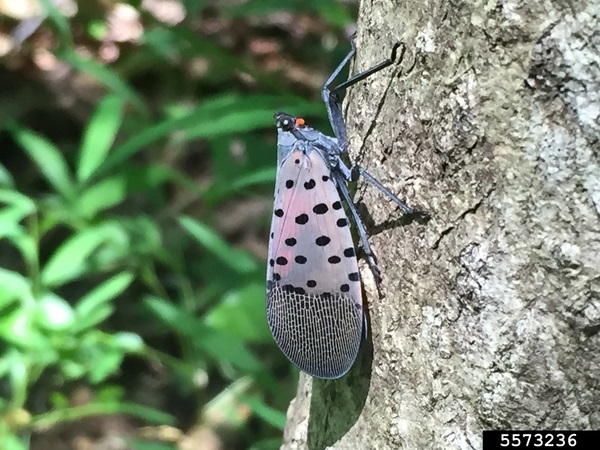The Spotted Lanternfly Is a Serious Pest Inching Closer to North Carolina
go.ncsu.edu/readext?832382
en Español / em Português
El inglés es el idioma de control de esta página. En la medida en que haya algún conflicto entre la traducción al inglés y la traducción, el inglés prevalece.
Al hacer clic en el enlace de traducción se activa un servicio de traducción gratuito para convertir la página al español. Al igual que con cualquier traducción por Internet, la conversión no es sensible al contexto y puede que no traduzca el texto en su significado original. NC State Extension no garantiza la exactitud del texto traducido. Por favor, tenga en cuenta que algunas aplicaciones y/o servicios pueden no funcionar como se espera cuando se traducen.
Português
Inglês é o idioma de controle desta página. Na medida que haja algum conflito entre o texto original em Inglês e a tradução, o Inglês prevalece.
Ao clicar no link de tradução, um serviço gratuito de tradução será ativado para converter a página para o Português. Como em qualquer tradução pela internet, a conversão não é sensivel ao contexto e pode não ocorrer a tradução para o significado orginal. O serviço de Extensão da Carolina do Norte (NC State Extension) não garante a exatidão do texto traduzido. Por favor, observe que algumas funções ou serviços podem não funcionar como esperado após a tradução.
English
English is the controlling language of this page. To the extent there is any conflict between the English text and the translation, English controls.
Clicking on the translation link activates a free translation service to convert the page to Spanish. As with any Internet translation, the conversion is not context-sensitive and may not translate the text to its original meaning. NC State Extension does not guarantee the accuracy of the translated text. Please note that some applications and/or services may not function as expected when translated.
Collapse ▲
Spotted lanternfly adult. Photo by Emelie Swackhamer, Penn State University, courtesy of Bugwood.
The spotted lanternfly is a planthopper that is a serious pest of grapes, hops, fruit trees, and many ornamental plants. It is native to China, India, and Vietnam and first appeared in the U.S. in 2014. Last week it was found just 20 miles from the North Carolina border in Virginia which is the closest it has ever come to North Carolina.
Please, everyone, familiarize yourself with this pest, be on the lookout for it, and report it if you see it. This NC State Extension article has great photos and details about the insect. If you see a spotted lanternfly adult, nymph, or egg mass, please take a photo and email it to badbug@ncagr.gov along with information on the location and date it was discovered. You can also call the N.C. Department of Agriculture and Consumer Services at 919-707-3730 to report a sighting.
For photos and more information:


